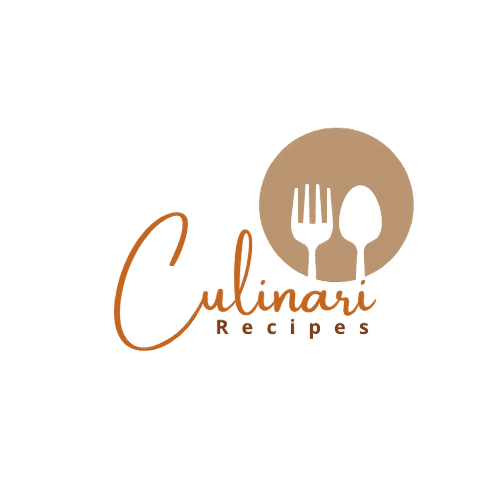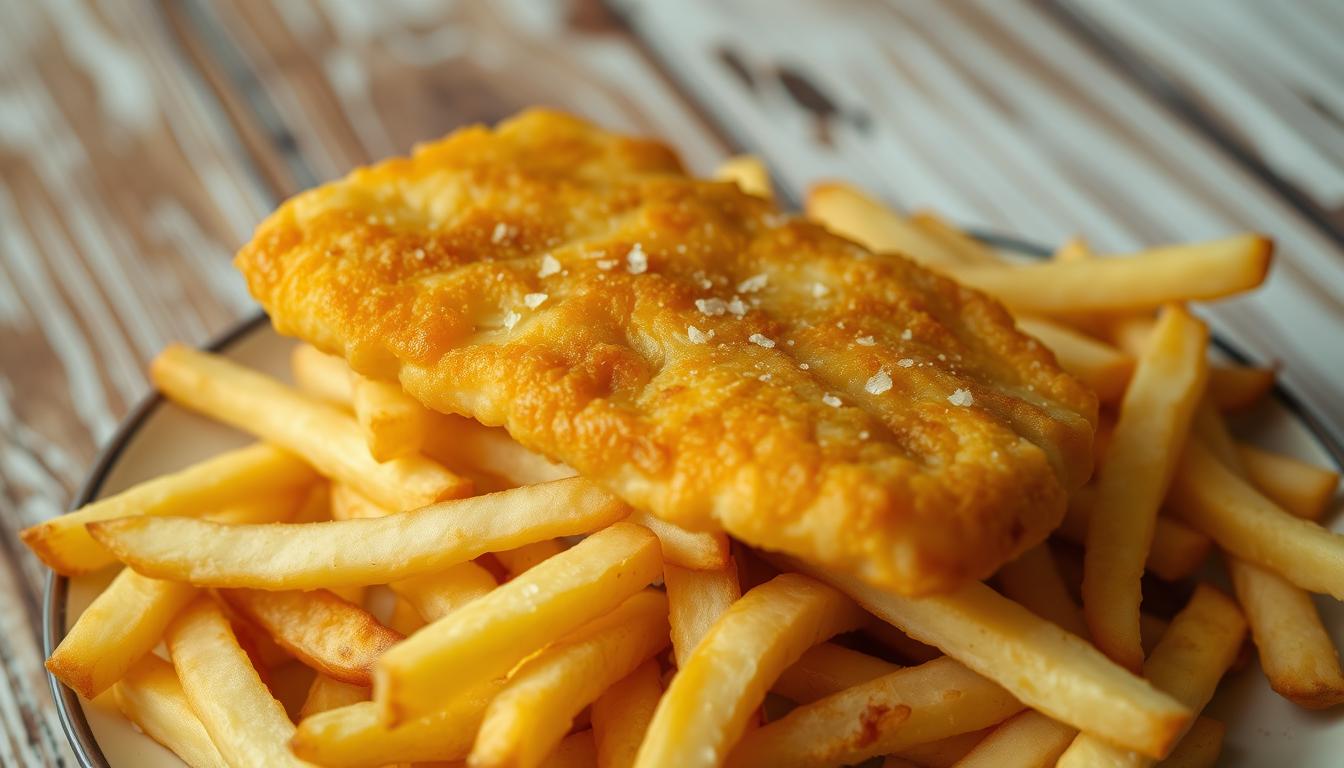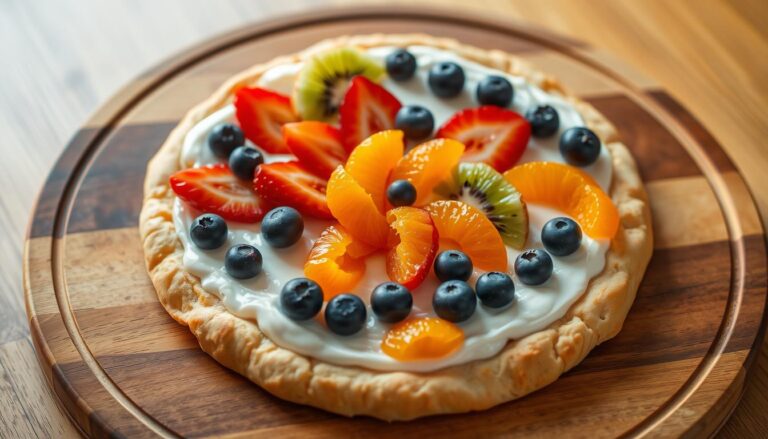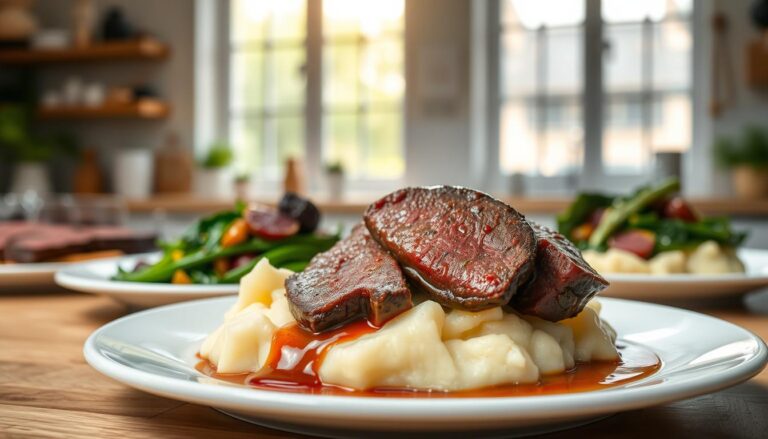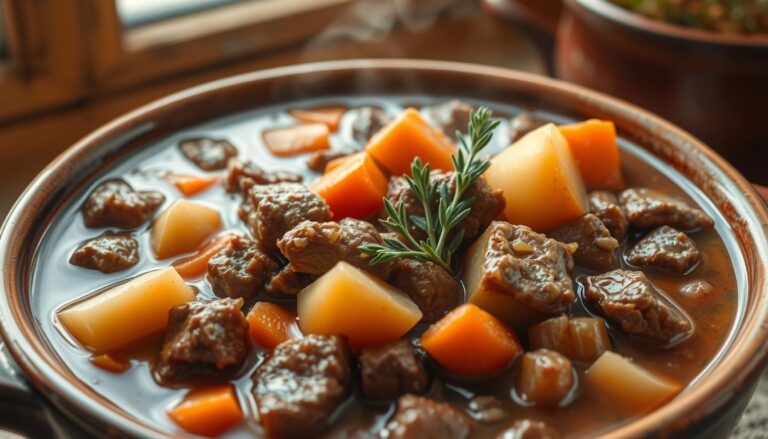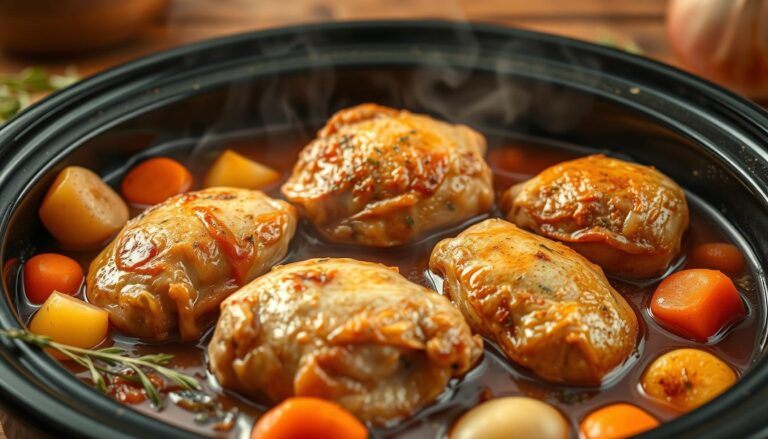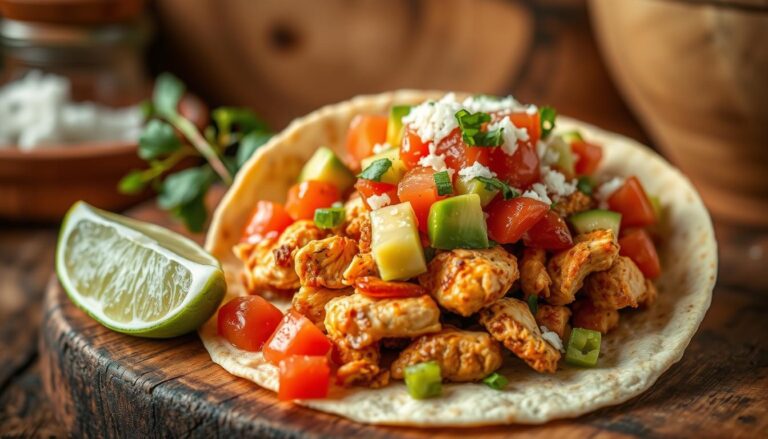Homemade Fish and Chips: A Classic British Dish Made Easy
Have you ever tried making fish and chips recipe at home? It’s a British classic loved by many.
Imagine biting into crispy, golden batter. It reveals tender, flaky fish. Served with crunchy chips (or fries), it’s a comfort food that hits the spot every time.
Making homemade fish and chips is simpler than you might think. We’re here to help you through it. In this article, we’ll share a simple fish and chips recipe. Plus, we’ll give you cooking tips to get that authentic taste.
Table of Contents
The Rich History of Fish and Chips
Did you know that traditional fish and chips has a long history? It started in the UK during the industrial revolution. Jewish immigrants from Spain and Portugal brought fried fish to England in the 19th century.
Origins in the United Kingdom
Frying fish was common in the 19th century. But adding chips (french fries) was a big change. This mix was first loved in Lancashire and Yorkshire. These places had lots of fishing and cotton mills.
- The first fish and chip shop was Joseph Malin’s in London in 1860.
- It became a cheap, tasty meal for the working class.
Evolution into a National Dish
Over time, classic fish and chips grew from a street food to a national favorite. More shops opened, and better ways to keep food fresh helped it reach more people.
By the early 1900s, fish and chips were a big part of British life. Thousands of shops served it to fans everywhere.
Essential Ingredients for Authentic Fish and Chips
The key to great fish and chips is using top-notch ingredients. You’ll need to pick the best fish, potatoes, and batter to make it at home.
Selecting the Right Fish
Choosing the right fish is key for authentic fish and chips. It should be firm, white, and flaky.
Best Fish Varieties for Frying
The top fish for fish and chips are cod, haddock, and pollock. They fry well and taste great.
Fresh vs. Frozen Fish
Fresh fish is best, but frozen fish works too if it’s high quality. Frozen fish is flash-frozen quickly to keep it fresh.
Potato Varieties for Perfect Chips
For chips, choose a potato like Maris Piper. They’re starchy, making chips crispy on the outside and fluffy inside.
Batter Ingredients for Crispy Coating
The batter makes fish and chips crispy. Mix flour, baking powder, and cold water for a light, crispy batter.
| Ingredient | Description | Importance |
|---|---|---|
| Fish | Cod, Haddock, Pollock | High |
| Potatoes | Maris Piper | High |
| Batter | Flour, Baking Powder, Cold Water | High |
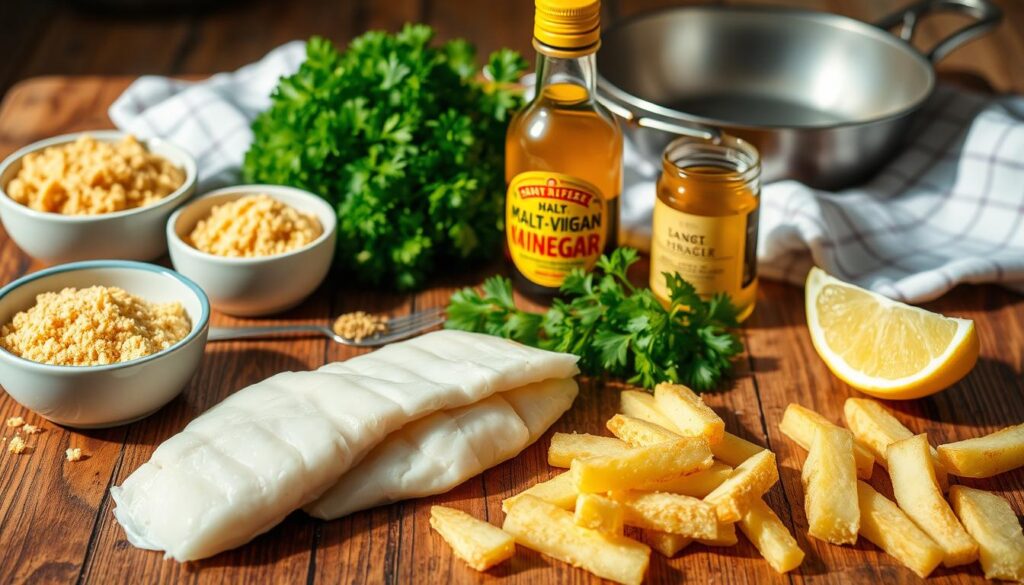
Equipment You’ll Need
Before you start cooking your fish and chips, make sure you have the right tools. This classic British dish needs some key kitchen items and knowledge about deep frying safety.
Essential Kitchen Tools
To make fish and chips, you’ll need a few important tools.
- A deep fryer or a large, deep pot with at least 3-4 inches of depth is necessary for frying.
- A thermometer is crucial for monitoring the oil temperature.
- A slotted spoon or skimmer is needed for removing the fish and chips from the hot oil.
Safety Considerations for Deep Frying
Deep frying can be hazardous if not done properly.
- Always use a thermometer to ensure the oil reaches the correct temperature.
- Never leave hot oil unattended.
- Keep children away from the cooking area.
By following these safety tips, you can enjoy making fish and chips without risking your safety.
| Tool | Purpose |
|---|---|
| Deep Fryer or Large Pot | Frying Fish and Chips |
| Thermometer | Monitoring Oil Temperature |
| Slotted Spoon or Skimmer | Removing Fish and Chips from Oil |
With the right equipment and safety precautions, you’re ready to start making your easy fish and chips recipe at home.
The Ultimate Fish and Chips Recipe
Craving fish and chips? Our ultimate recipe will guide you through every step of the cooking process. Making homemade fish and chips is easy. You just need a few ingredients and basic kitchen tools.
Ingredient List and Measurements
To make authentic fish and chips, you’ll need the following ingredients:
- 4 cod fillets (or other firm white fish)
- 1 cup all-purpose flour
- 1/2 cup cornstarch
- 1/2 cup cold beer
- 1/4 teaspoon salt
- 1/4 teaspoon black pepper
- 1/4 teaspoon baking powder
- 2 pounds potatoes, peeled
- Vegetable oil for frying
For the batter, mixing the dry ingredients first ensures an even coating on the fish.
Preparation Time and Cooking Time
Preparation time: 30 minutes. Cooking time: 20 minutes. Total time: 50 minutes.
Serving Size and Nutritional Information
Serves 4. Approximate nutritional information per serving: Calories: 600, Fat: 30g, Saturated Fat: 4g, Cholesterol: 60mg, Sodium: 800mg.
Recipe Overview
This fish and chips recipe involves a beer-battered fish coating and triple-cooked chips for an authentic British experience. “Fish and chips is a national dish of the UK, and its preparation is an art that requires attention to detail,” as noted by culinary experts. The key to a perfect dish lies in the quality of the ingredients and the frying technique.
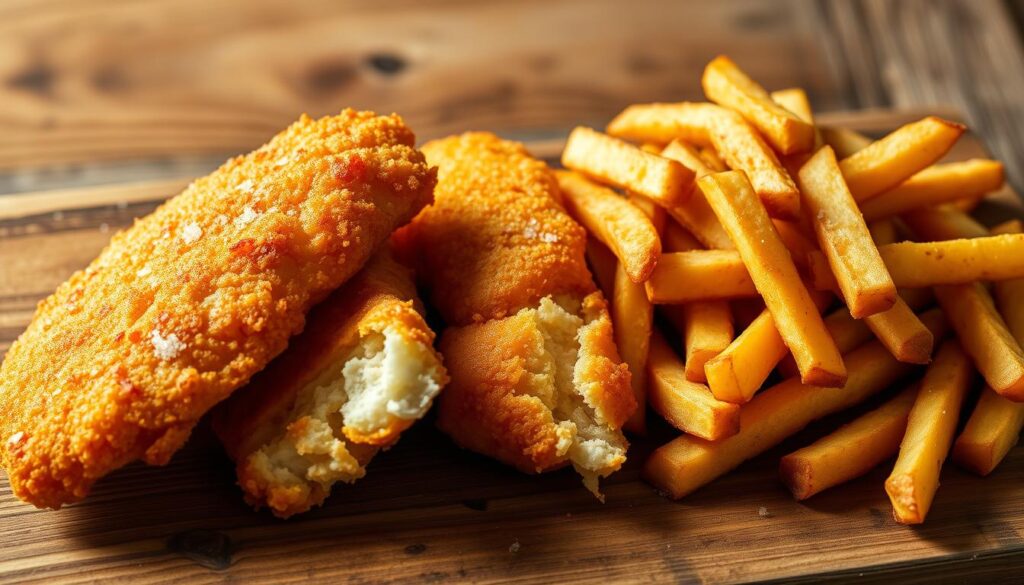
The batter is made with cold beer, which helps create a light and crispy coating. Triple-cooking the chips ensures they’re crispy on the outside and fluffy on the inside.
By following this recipe, you’ll be able to create a delicious and authentic British dish in the comfort of your own home.
Preparing Your Ingredients
To make amazing fish and chips, start with the right ingredients. Clean and fillet the fish, cut and soak the potatoes, and mix the perfect batter. This will help you get crispy fish and chips.
Cleaning and Filleting the Fish
First, rinse the fish under cold water to get rid of scales or debris. Dry it with paper towels to help the batter stick. Use a sharp knife to remove bones and skin, if needed. Handling the fish gently is key for authentic fish and chips.
Cutting and Soaking the Potatoes
Cut the potatoes into chip shapes. Soak them in cold water for at least 30 minutes to remove starch. This makes the chips crispy. After soaking, dry the chips well with a towel or paper towels.
Mixing the Perfect Batter
A great batter is crucial for crispy fish and chips. You can use a traditional beer batter or a non-alcoholic version.
Traditional Beer Batter
Mix flour, cornstarch, and salt in a bowl. Add beer slowly, stirring until smooth and lump-free. The beer’s carbonation makes the batter light and crispy.
Non-Alcoholic Alternatives
If you don’t want beer, use soda water or water with vinegar instead. These options can still make a crispy and tasty batter.
Mastering the Frying Technique
To get the crispiest fish and chips, you must master frying. This skill needs attention, the right tools, and practice. You aim for a golden, crispy outside and a soft inside.
Oil Selection and Temperature Control
Choosing the right oil is key. Use oils like peanut or avocado, which don’t burn easily. Temperature control is crucial. For fish, fry at 350°F to 375°F (175°C to 190°C). For chips, start at 325°F (165°C) and end at 375°F (190°C).
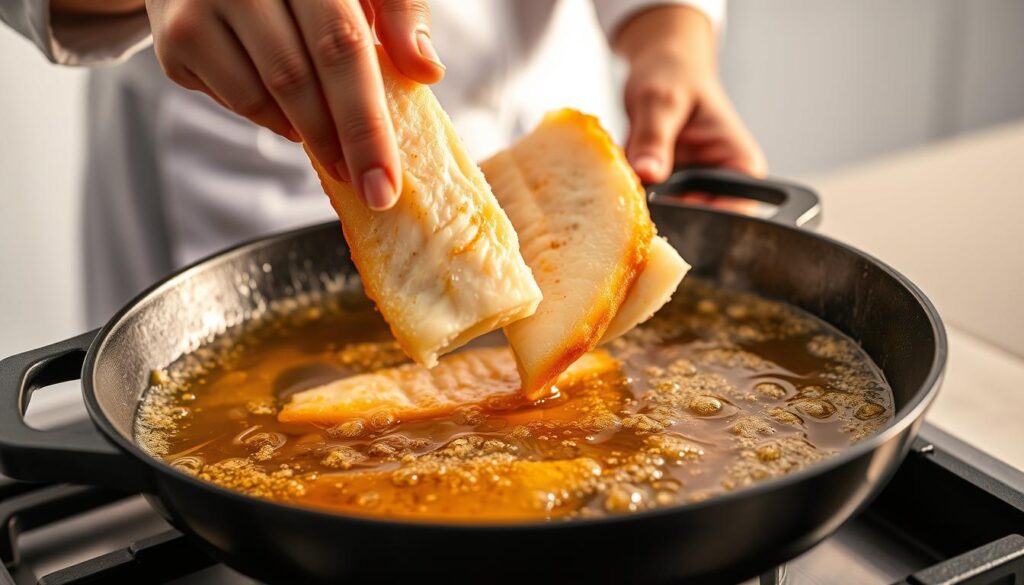
Double-Frying the Chips for Extra Crispiness
Double-frying chips makes them extra crispy. First, fry them at 325°F (165°C) to cook them through. Then, at 375°F (190°C), crisp them up. This way, your chips are both cooked and crispy.
Achieving the Perfect Fish Coating
The batter on the fish makes it crispy. Make sure the fish is dry before battering. Use a light batter that complements the fish’s flavor. Fry at 350°F to 375°F (175°C to 190°C) until golden and cooked.
“The art of frying is not just about throwing food into hot oil; it’s about precision, patience, and practice.”
Mastering these frying techniques will help you make tasty, crispy fish and chips at home. Remember, practice is key. Don’t worry if it takes a few tries to get it right.
Traditional British Accompaniments
British cuisine is famous for its hearty sides with fish and chips. These traditional sides enhance the dish’s flavors and the dining experience. Try homemade tartar sauce, mushy peas, and malt vinegar with your traditional fish and chips.
Homemade Tartar Sauce Recipe
Homemade tartar sauce is a classic with fish and chips. It’s made from mayonnaise, pickles, capers, and lemon juice. Mix 1/2 cup of mayonnaise with 2 tablespoons of pickles, 1 tablespoon of capers, and a squeeze of lemon. Refrigerate until ready to serve. This tangy sauce brings a rich flavor to your authentic fish and chips.
Authentic Mushy Peas
Mushy peas are a traditional British side. They’re made from marrowfat peas. Soak 1 cup of marrowfat peas overnight, then boil until tender. Mash them with a fork and season with salt and pepper. Some add butter or mint for extra flavor. Serve hot with your fish and chips for a true British experience.
Malt Vinegar and Other Condiments
Malt vinegar is key for fish and chips in the UK. It gives a unique flavor that pairs well with the dish. You can also try salt, pepper, and curry sauce for different tastes. For a twist, use different vinegars or dried herbs on your fish and chips.
Step-by-Step Cooking Instructions
Now that we’ve covered the essential ingredients and equipment, let’s dive into the cooking steps. We’ll make delicious homemade fish and chips together.
First Stage: Preparing the Chips
Start by preparing your chips. Heat a large pot of vegetable oil to about 320°F (160°C) for the first fry. Make sure your potato sticks are dry and free of moisture. Add the potatoes to the hot oil in batches to avoid overcrowding.
Fry them until they are pale and slightly tender, about 3-4 minutes. Remove the chips from the oil with a slotted spoon. Drain off excess oil on paper towels.
Second Stage: Battering the Fish
While your chips are draining, prepare your fish for battering. Dip each piece of fish into the batter, ensuring it is fully coated. The batter should be smooth and free of lumps. If necessary, adjust the consistency with a little more cold water or flour.
Final Stage: Frying and Timing
Increase the oil temperature to about 375°F (190°C) for the second fry. Fry the chips again in batches until they are golden brown and crispy, about 2-3 minutes. Fry the battered fish in hot oil until golden brown, about 3-4 minutes or until it reaches an internal temperature of 145°F (63°C).
Frying the Chips to Perfection
To achieve perfectly cooked chips, it’s crucial to not overcrowd the pot and to fry them at the right temperature. The first fry at a lower temperature helps cook the potatoes through. The second fry at a higher temperature crisps them up.
Achieving Crispy Fish
For crispy fish, ensure the batter is not too thick and that the fish is not overcooked. The oil should be hot enough to seal the batter immediately, preventing it from absorbing too much oil.
| Cooking Stage | Temperature | Time |
|---|---|---|
| First Fry (Chips) | 320°F (160°C) | 3-4 minutes |
| Second Fry (Chips) | 375°F (190°C) | 2-3 minutes |
| Frying Fish | 375°F (190°C) | 3-4 minutes |
Healthier Alternatives to Traditional Fish and Chips
Healthier fish and chips are not only tasty but also easy to make. You can make this classic dish healthier with a few tweaks. This way, you can enjoy it without feeling guilty about the calories.
Oven-Baked Fish and Chips Method
Oven-baking is a smart way to make fish and chips healthier. It uses less oil, yet still gives you a crispy outside and a soft inside. Preheat your oven to 400°F (200°C).
Coat the fish with a light batter and put it on a baking sheet with parchment paper. Slice the potatoes thinly and toss them with a bit of oil. Spread them on another baking sheet. Bake both for 20-25 minutes, until they’re golden and crispy.
Air Fryer Fish and Chips Recipe
Using an air fryer is another great way to make healthy fish and chips. It uses almost no oil, cutting down calories a lot. Coat the fish and chips as you would for oven-baking, then cook in the air fryer at 375°F (190°C) for 10-15 minutes. Shake halfway through for even cooking.
| Method | Calories per Serving | Cooking Time |
|---|---|---|
| Traditional Deep-Frying | 600+ | 10-15 minutes |
| Oven-Baking | 300-400 | 20-25 minutes |
| Air Fryer | 200-300 | 10-15 minutes |
Try these healthier cooking methods to enjoy homemade fish and chips. They’re not only tasty but also better for you. Experiment with different seasonings and ingredients to find your favorite.
Troubleshooting Common Fish and Chips Problems
Fixing problems is key to making great fish and chips. Even with top ingredients and gear, issues can pop up. Knowing how to solve these will help you make a tasty, true British dish.
Soggy Batter Issues
A soggy batter can mess up your dish. This usually happens if the batter isn’t cooked right or if it’s not drained well. To fix this, make sure your oil is at the right temperature before frying. Also, gently shake off extra oil after frying. Using a thermometer helps keep the oil at the perfect heat.
Undercooked or Overcooked Fish
Cooking fish just right is very important. Fish that’s not cooked enough can be unsafe, while overcooked fish gets dry. To avoid this, don’t overcrowd the frying basket and check the fish often. It should flake easily with a fork when it’s done. Adjust your cooking time based on how thick your fish pieces are.
Limp or Greasy Chips
Limp or greasy chips often come from wrong frying temperatures or not soaking potatoes long enough. Soaking helps remove extra starch, making chips crisper. Double-frying is another way to get chips just right. Make sure the oil is hot enough for the second fry to make the chips crisp quickly.
Conclusion
Now you know how to make classic fish and chips. It’s time to try it out in your kitchen. With the right ingredients and techniques, you can make delicious homemade fish and chips. It will impress everyone.
Success comes from paying attention to every detail. Choose fresh fish and the right potatoes. Get the batter and coating just right. With practice, you’ll make perfect homemade fish and chips.
Homemade fish and chips is a great choice for a traditional British meal or a new adventure. So, get your ingredients ready, heat the oil, and enjoy a satisfying meal. It’s sure to become a favorite.
